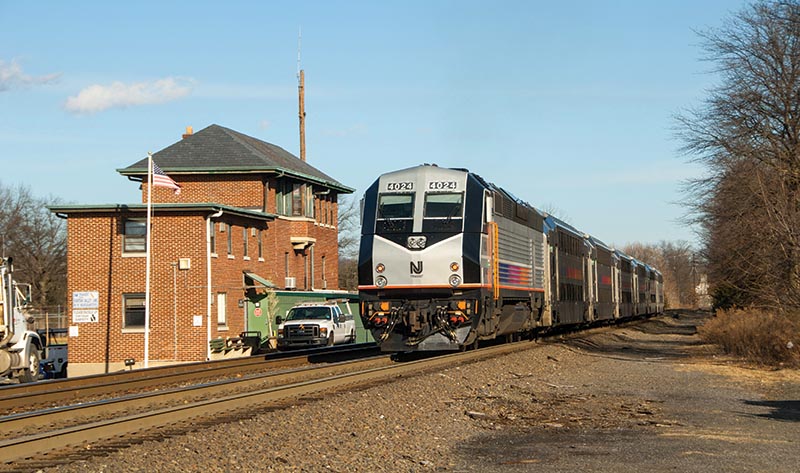 Railfans vary in how they enjoy their hobby, but seeing trains move is one of the most commonly shared activities. Some enjoy recording what they see in log books, or with audio or video recordings, or with “roster” photos whose primary purpose is recordkeeping. Others want to make sophisticated photographs — works of art that interpret as well as capture what they see. Still others simply like to sit trackside with a lawn chair and a cooler and just watch what passes by. Ask those of us who pore over old maps, search for old photos, or explore disused rights-of-way, and we’ll probably answer, “I wish I’d seen this run!”
Railfans vary in how they enjoy their hobby, but seeing trains move is one of the most commonly shared activities. Some enjoy recording what they see in log books, or with audio or video recordings, or with “roster” photos whose primary purpose is recordkeeping. Others want to make sophisticated photographs — works of art that interpret as well as capture what they see. Still others simply like to sit trackside with a lawn chair and a cooler and just watch what passes by. Ask those of us who pore over old maps, search for old photos, or explore disused rights-of-way, and we’ll probably answer, “I wish I’d seen this run!”
Yet there is more to railways than trains. The infrastructure itself is as potent as any locomotive or car. Grades that cut through the landscape, tunnels that pierce through the hills, and bridges that span everything from a local creek to the mighty Mississippi River are all evocative parts of the railway landscape. All are elements that endure for generations, and many are deeply evocative. To stand at Horseshoe Curve is, in a way, to witness Pennsylvania Railroad as still alive; to see Tehachapi Loop, even with Union Pacific trains, is to take in Southern Pacific as if it still existed.
Not all railway infrastructure lasts, however. Consider fans who love railway signals. While lineside signaling systems are long-lived, they are not immortal, and the last few decades have been filled with dramatic change. Distinctive signal systems like searchlights, position lights, and semaphores fell victim to updated industry standards and new regulations forcing their replacement with more advanced systems. In the process, a certain kind of bland sameness has descended onto railways across North America. It is a gain in safety, perhaps, but for fans, an aesthetic loss.
In this issue, we look at another piece of once common but now disappearing railway landscape, the interlocking tower. Long before centralized dispatching centers and automated signaling systems, the only way that complicated junctions could be managed was through these manned facilities.
At its most basic, an interlocking is a set of manual controls (usually levers) that operate switches and associated signals, and is designed so that two conflicting routes cannot be lined up simultaneously. Since interlocking operators needed a good view of a junction and the tracks approaching them, typically these machines were housed in a two-story building whose first floor was filled with cranks or relays, and a second floor glassed-in control room, buildings that came to be known as “towers.”
Developed in Great Britain, the first North American interlockings were installed in the 1870s. Improving both safety and efficiency, interlockings became more and more common throughout the late 19th and early 20th centuries. By the eve of World War I, there were more than 400 of them in the U.S. alone. The decentralized system of operation also helped put more eyes and ears in the field that could report and react to any situation that might arise.
“Armstong” towers gave way to electro-mechanical systems, and eventually electrical relays were replaced by software. But progress has come for the tower, too. Interlocking towers began disappearing throughout the postwar era, as functions were consolidated and eventually eliminated. Today, there are fewer than 50 still in service across North America. The Class I railroads all dispatch their 10,000-plus-mile systems from individual remote centers. The systematic elimination of towers was so gradual, we almost didn’t notice until it was too late. Change comes slowly to the railroads, but it still comes.
—Alexander Benjamin Craghead is a transportation historian, photographer, artist, and author.


